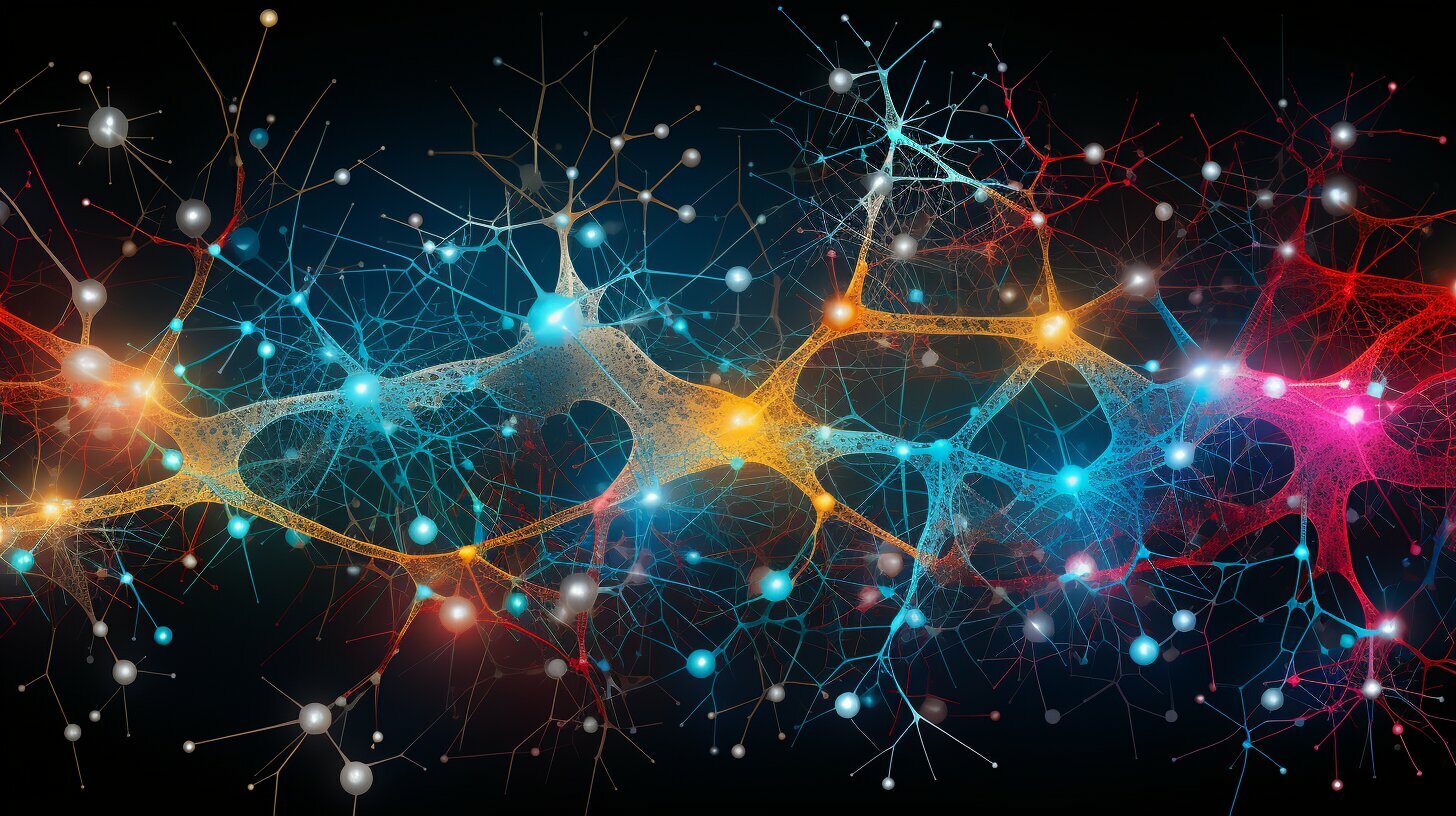Welcome to our latest article, where we delve into the fascinating world of advanced human-AI interaction and explore the exciting possibilities it holds for the future of technology. Artificial intelligence (AI) has come a long way, and its integration into various aspects of human life continues to improve efficiency and enhance our capacities. As we navigate this ever-evolving landscape, it’s important to consider both the benefits and concerns that come with these advancements.
Key Takeaways
- AI integration is predicted to enhance human life and capabilities by 2030.
- Artificial intelligence has historical roots dating back to the mid-20th century.
- Natural language processing and computer vision are key components of current human-AI interaction.
- Advancements in AI technologies encompass natural language processing, computer vision, machine learning, and neural networks.
- Emerging trends include social robots, emotional AI, multimodal interfaces, and conversational AI.
Now that we have a glimpse of what’s to come, let’s dive deeper into the historical perspective of AI and the current state of human-AI interaction. Join us as we explore the advancements, emerging trends, ethical considerations, and user-centered design that shape the future of human-AI interaction.
Historical Perspective
In order to understand the current state of artificial intelligence (AI) and its impact on human interaction, it is important to explore its historical roots. The concept of AI dates back to the mid-20th century, with pioneers such as Alan Turing and John McCarthy making significant contributions to the field. These visionaries laid the groundwork for what would become a rapidly evolving field of study.
One of the notable milestones in the history of AI is the Dartmouth Workshop in 1956, often regarded as the birth of AI as an academic discipline. This workshop brought together leading minds in the field to discuss and explore the potential of AI. It laid the foundation for further research and development in the years to come.
Early AI programs also played a crucial role in shaping the field. Programs like the Logic Theorist and the General Problem Solver demonstrated the potential of AI by solving mathematical problems and showcasing the capabilities of intelligent systems. These early programs paved the way for further advancements in AI technology.
As we delve deeper into the historical perspective of AI, we gain valuable insights into the origins of this transformative technology. Understanding the contributions of AI pioneers and the early programs they developed allows us to appreciate the progress made over the years and the possibilities that lie ahead.

Quotes from AI Pioneers:
“We can only see a short distance ahead, but we can see plenty there that needs to be done.” – Alan Turing
“As soon as it works, no one calls it AI anymore.” – John McCarthy
| Year | Event |
|---|---|
| 1956 | Dartmouth Workshop marks the birth of AI as an academic field |
| 1956 | Logic Theorist, the first AI program, is developed |
| 1956 | General Problem Solver, an influential AI program, is developed |
Current State of Human-AI Interaction
AI systems have become an integral part of our daily lives, revolutionizing the way we interact with technology. Through advancements in natural language processing and computer vision, AI is now capable of understanding and responding to human speech and interpreting visual cues. These developments have led to the proliferation of voice assistants, chatbots, and recommendation algorithms, enhancing accessibility and usefulness in various domains.
However, amidst these remarkable advancements, concerns regarding user privacy and ethical considerations have emerged. The extensive collection and analysis of user data by AI systems raise questions about the protection of personal information. It is essential to establish robust safeguards to ensure user privacy is respected and data is handled responsibly.
Furthermore, biases embedded in AI algorithms pose ethical challenges. AI systems learn from vast amounts of data, which can include biased or discriminatory information. This can result in biased recommendations or decisions, perpetuating inequalities in areas such as hiring, loan approvals, and criminal justice. It is crucial to address these biases and promote fairness and inclusivity in AI design and implementation.
“AI systems have the potential to greatly benefit society, but we must also remain vigilant about their impact on individuals and communities. As developers and users of AI, it is our responsibility to prioritize ethical considerations and ensure that AI technologies are designed and deployed in a manner that respects human rights and values.”
In conclusion, the current state of human-AI interaction is characterized by significant advancements in AI systems, particularly in natural language processing and computer vision. While these developments offer tremendous opportunities, it is imperative to address user privacy concerns and ethical implications in order to build a future where AI technologies enhance human well-being and foster a fair and inclusive society.

Advancements in AI Technologies
In recent years, the field of artificial intelligence (AI) has witnessed remarkable advancements, revolutionizing various industries and enhancing human capabilities. Some of the key areas that have seen significant progress include natural language processing, computer vision, machine learning, and neural networks.
One major breakthrough in AI technology is the development of natural language processing (NLP) algorithms. NLP enables machines to understand and interpret human language, facilitating seamless communication between humans and AI systems. This advancement has paved the way for intelligent virtual assistants, chatbots, and voice recognition systems that can understand and respond to human speech.
Another notable advancement is in the field of computer vision, where AI systems can interpret and analyze visual data. Computer vision algorithms enable machines to recognize and identify objects, faces, and gestures, opening up new possibilities in areas such as autonomous vehicles, surveillance systems, and medical imaging.
Machine learning and neural networks are also at the forefront of AI advancements. Machine learning algorithms allow AI systems to learn from data and improve their performance over time. Neural networks, inspired by the human brain, have proven to be highly effective in tasks such as image recognition, natural language processing, and predictive analytics.
The Role of Advancements in AI Technologies
“These advancements in AI technologies have transformed how we interact with machines, enabling more natural and intuitive communication,” says Dr. Emily Adams, an AI researcher.
These advancements have not only improved the efficiency of AI systems but also expanded their applications across various sectors. For example, in healthcare, AI-powered diagnostic tools can analyze medical images and provide accurate diagnoses. In the entertainment industry, personalized content recommendations powered by AI algorithms have enhanced user experiences. The potential of these advancements is vast, and they continue to shape the future of human-AI interaction.
| Advancements in AI Technologies | Applications |
|---|---|
| Natural Language Processing | Intelligent virtual assistants, chatbots, voice recognition systems |
| Computer Vision | Autonomous vehicles, surveillance systems, medical imaging |
| Machine Learning | Predictive analytics, personalized recommendations |
| Neural Networks | Image recognition, natural language processing |
With ongoing research and development, we can expect further advancements in AI technologies, leading to even more sophisticated and capable systems. These advancements will continue to reshape various industries and have a profound impact on how we interact with AI in the future.

Ethical and Societal Implications
The advancement of artificial intelligence (AI) has brought about numerous benefits and conveniences, but it has also raised important ethical and societal considerations that must be addressed. As AI systems become more integrated into our daily lives, it is crucial to carefully navigate the impact they have on user privacy, biases in AI algorithms, and job displacement.
One of the key ethical implications of AI is user privacy. AI systems often require access to personal data in order to function effectively. However, this raises concerns about the security and privacy of user information. It is essential to develop robust safeguards and regulations to protect user privacy and prevent unauthorized access to sensitive data.
Biases in AI algorithms are another critical issue that needs to be confronted. AI systems are built and trained by humans, and as a result, they can inherit and perpetuate biases present in the data used for training. This can lead to discriminatory outcomes and perpetuate existing societal inequalities. Efforts must be made to address and mitigate these biases to ensure fairness and equity in AI applications.
Job displacement is a concern that accompanies the increased automation brought about by AI technologies. While AI has the potential to streamline processes and improve efficiency, it also has the capacity to replace certain jobs. It is crucial to consider the potential impact on the workforce and implement measures such as reskilling and upskilling initiatives to ensure a smooth transition and protect workers from unemployment.
| Ethical and Societal Implications of AI | Key Concerns |
|---|---|
| User Privacy | Unauthorized access to personal data |
| Biases in AI algorithms | Discrimination and perpetuation of societal inequalities |
| Job Displacement | Potential unemployment due to automation |
Addressing the ethical and societal implications of AI is crucial to ensure that these technologies are developed and deployed responsibly. It requires collaboration between technology developers, policymakers, and society as a whole. By promoting transparency, accountability, and inclusivity, we can harness the potential of AI technologies while protecting user rights, promoting fairness, and minimizing societal disruptions.
User-Centered Design
In order to create highly usable and enjoyable products and experiences, user-centered design is essential. This approach prioritizes the needs and preferences of users throughout the design process, ensuring that the final product meets their expectations. One of the key components of user-centered design is user research. By conducting extensive research, we gain valuable insights into the target audience, their behaviors, and their pain points. This information helps us make informed design decisions that address the specific needs of users.
Another important aspect of user-centered design is the creation of user personas. These personas represent fictional characters that embody the characteristics of the target audience. By developing personas, we gain a deeper understanding of the users’ motivations, goals, and preferences. This enables us to tailor the design to their specific needs, resulting in a more personalized and engaging experience.
An iterative design process is also crucial in user-centered design. This involves continuously refining and improving the design based on user feedback. By involving users in the design process, we can identify usability issues early on and make the necessary adjustments. This iterative approach allows us to create a design that is intuitive, easy to use, and meets the expectations of the users.
Usability testing is another important aspect of user-centered design. By conducting usability tests, we can observe how users interact with the design and identify any usability issues or areas for improvement. This feedback is invaluable in refining the design and ensuring that it meets the needs of the users.
Finally, accessibility is a key consideration in user-centered design. It is important to ensure that the design is accessible to individuals with disabilities, allowing them to fully engage with the product or experience. This includes considerations such as providing alternative text for images, using appropriate color contrast, and ensuring keyboard accessibility.
Overall, user-centered design is a holistic approach that puts the user at the center of the design process. By understanding their needs, preferences, and behaviors, we can create products and experiences that are user-friendly, engaging, and inclusive.

Benefits of User-Centered Design
- Enhanced user satisfaction and engagement
- Improved usability and ease of use
- Higher conversion rates and customer loyalty
- Reduced development costs and time
- Increased accessibility and inclusivity
Key Steps in User-Centered Design
- Conduct user research to understand user needs and behaviors
- Create user personas to represent the target audience
- Follow an iterative design process, incorporating user feedback
- Conduct usability testing to identify and address usability issues
- Ensure accessibility for individuals with disabilities
Online platforms for Artificial Intelligence
When it comes to leveraging the power of artificial intelligence (AI) for business applications, online platforms play a pivotal role in providing the necessary tools and resources. One prominent platform in this realm is SAS, which offers a comprehensive suite of AI solutions across various industries. Whether it’s enhancing data analytics, automating processes, or developing machine learning algorithms, SAS provides businesses with the means to harness the potential of AI.
Online AI platforms, like SAS, enable businesses to develop and deploy AI applications efficiently and effectively. These platforms often provide a range of services, including data preprocessing, model training, and deployment options. They offer user-friendly interfaces that make it easier for individuals without extensive technical expertise to build and deploy AI models. With the help of these platforms, businesses can unlock the benefits of AI in areas such as customer service, fraud detection, and prediction modeling.
“Online AI platforms offer businesses a competitive advantage by allowing them to tap into the power of AI without the need for extensive resources or specialized skills. These platforms provide the infrastructure and tools necessary for businesses to leverage AI technologies and gain actionable insights from their data.” – AI expert
Moreover, online AI platforms facilitate collaboration and knowledge sharing among data scientists and AI enthusiasts. They often come with built-in community forums and support networks, enabling users to connect, learn from each other, and solve challenges together. This fosters a sense of community and continuous learning, which is essential in the ever-evolving field of AI.
Table: Comparison of Online AI Platforms
| Platform | Key Features | Industries |
|---|---|---|
| SAS | Data analytics, machine learning, natural language processing | Finance, healthcare, retail |
| Google Cloud AI Platform | AutoML, custom machine learning models, model deployment | Technology, e-commerce, manufacturing |
| Amazon SageMaker | Managed notebooks, model training, hyperparameter optimization | Automotive, media, energy |
| Microsoft Azure Machine Learning | Automated machine learning, model training, deployment pipelines | Government, education, telecommunications |
As AI continues to advance, so will the capabilities of online platforms. The convenience, cost-effectiveness, and collaborative nature of these platforms make them indispensable tools for businesses looking to embrace the future of AI. By leveraging the offerings of online AI platforms, organizations can unlock new opportunities, increase operational efficiency, and stay ahead in the rapidly evolving digital landscape.
Conclusion
The future of human-AI interaction is filled with exciting possibilities and advancements in technology. As AI continues to evolve, we can expect it to seamlessly integrate into various aspects of our daily lives, improving efficiency and enhancing our capabilities. However, it is important to address the concerns surrounding AI, such as job displacement and privacy, to ensure a positive and beneficial future.
Despite these concerns, experts remain optimistic that, with responsible development and regulation, the majority of individuals will be better off in a world where AI plays a significant role. By aligning AI tools and systems with human values and well-being, we can harness the full potential of AI to enhance our lives.
It is crucial that we pay close attention to how AI is engineered, distributed, and updated. By doing so, we can ensure that AI technologies are developed in a way that not only benefits society but also respects individual rights and values. Through responsible development, we can create a future where AI advancements provide significant benefits while minimizing the potential risks.
As we move forward, it is important to continue monitoring the ethical implications, societal impact, and user-centric design of AI systems. By staying informed and actively addressing these issues, we can shape a future where human-AI interaction brings about positive change and improves our lives in meaningful ways.
FAQ
What is artificial intelligence (AI)?
Artificial intelligence refers to the development of computer systems that can perform tasks that normally require human intelligence, such as speech recognition, problem-solving, and decision making.
When did the concept of AI originate?
The concept of artificial intelligence dates back to the mid-20th century, with pioneers like Alan Turing and John McCarthy making significant contributions to the field.
What were some early AI programs?
Early AI programs, such as the Logic Theorist and the General Problem Solver, aimed to solve mathematical problems and demonstrate the capabilities of AI.
How are AI systems integrated into our daily lives?
AI systems, such as voice assistants, chatbots, and recommendation algorithms, are now pervasive in our daily lives, shaping our interactions and improving accessibility.
What are some advancements in AI technologies?
Advancements in AI technologies include natural language processing, computer vision, machine learning algorithms, and neural network architectures, enabling the development of intelligent virtual assistants, autonomous vehicles, and medical diagnostic tools.
What are some emerging trends in human-AI interaction?
Emerging trends include the development of social robots, multimodal interfaces, brain-computer interfaces, AI-powered virtual/augmented reality, and conversational AI systems.
What are the ethical concerns related to AI?
Ethical concerns include user privacy, biases in AI algorithms, and job displacement due to automation. Responsible development, transparency, and regulatory frameworks are crucial in addressing these concerns.
What is user-centered design?
User-centered design prioritizes the needs and preferences of users in the design process, involving user research, creation of user personas, iterative design with user feedback, usability testing, and accessibility considerations.
What are online AI platforms?
Online AI platforms, such as SAS, provide tools and resources for the development and deployment of AI applications, enabling businesses to leverage AI capabilities to improve efficiency and outcomes.
What is the future of human-AI interaction?
Experts predict that, with responsible development and regulation, most individuals will benefit from the seamless integration of AI into various aspects of human life, despite concerns about job displacement and privacy.











